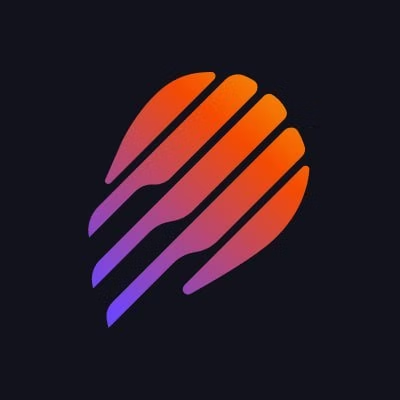Can We Sell Pi Coin Now? Detailed Analysis

Can We Sell Pi Coin Now?
The Pi Network has generated enormous excitement since its inception, enticing millions to mine Pi coins on their smartphones. As interest peaks, a common question echoes throughout crypto communities: Can we sell Pi Coin now? The answer is more nuanced than a simple yes or no, as the project's progress and the shifting regulatory landscapes both play a significant role. Let's delve into the details and outline everything Pi holders need to know in 2024.
Market Overview
What is Pi Coin?
Pi Coin is the native cryptocurrency of the Pi Network, an innovative social blockchain project started in 2019 by Stanford graduates. Unlike most cryptocurrencies, Pi could be mined on mobile phones without heavy battery or data usage, making it accessible to anyone with a smartphone. The team's vision was to democratize access to cryptocurrency and build the world's most inclusive peer-to-peer marketplace.
Current Status of Pi Coin
As of early 2024, Pi Network boasts over 47 million engaged pioneers (users). Yet, the central question lingers: is Pi Coin readily tradable? This concern revolves around whether Pi has launched its mainnet and if legitimate exchanges support Pi trading.
State of Mainnet and Pi Coin Trading
For a cryptocurrency to be fully tradable, it typically needs a live and functional mainnet, facilitating the movement of tokens outside a centralized or controlled test environment. Pi Network has been in an enclosed mainnet phase. Here, coins are visible in wallets but aren't yet transferable on public blockchains or external exchanges. Instead, transactions have remained largely within the Pi ecosystem, with only select testing of third-party integrations.
Financial Analysis and Trading Realities
Pi Coin on Exchanges
There have been reports that some exchanges display a Pi/USDT trading pair. However, it's critical to understand that these are typically IOUs or speculative assets, and these listings are not officially supported by the Pi Network team. Trading real Pi Coin, transferred from the official Pi Wallet to other users or exchanges, is not available at this time.
Why Can't Users Trade Pi Yet?
- Enclosed Mainnet: Pi Network’s mainnet is not fully open to the public. Coins exist, but are locked within the Pi ecosystem.
- No Official Exchange Listing: Pi’s core team has not approved any external exchange to list the token, so any supposed trading is either unofficial IOU agreements or test markets.
- Regulatory Compliance: The Pi team wants to ensure full KYC (Know Your Customer) compliance, deterring fraud and aligning with global regulations before launching public trading.
Current Means of Utilizing Pi
Pi holders can currently use their coins in limited ways inside the Pi Network’s marketplace, where some peer-to-peer goods and services are available. These experiments are part of Pi’s enclosed phase, providing real use cases while protecting the fairness and security of the eventual open mainnet.
What About OTC (Over-The-Counter) Trades?
Some users attempt to buy or sell Pi via OTC or peer-to-peer groups. This is highly risky and discouraged. Since Pi coins are locked to Pi Wallets until the open mainnet, OTC trades often rely on promises, IOUs, or speculation, leading to a high risk of scams and loss of funds.
Historical Insights and Roadmap
Project Development Timeline
- 2019: Pi Network is launched as a mobile app.
- 2020–2022: Community growth, marketplace pilots, and testnet maturity.
- 2022–2023: Launch of the enclosed mainnet, KYC process rollout, and expansion of ecosystem apps.
- 2024: The Pi Network team provides updates hinting at an open mainnet launch, but, as of now, fiat or crypto exchange is not possible.
Pi has progressed, but a public mainnet launch and broader liquidity remain goals for the near future. The team’s approach favors security and regulatory clarity over rapid, risky expansion.
Advice for Pi Holders and Market Participants
Recommendations
- Be Wary of Scams: Any claim to "sell your Pi now" outside the official app ecosystem is likely fraudulent.
- Avoid Unverified Exchanges: Wait for formal announcements from the Pi Network on true partnerships.
- Secure Your Tokens: Keep your Pi in your official wallet (the team-recommended Bitget Wallet is a secure choice). Enable two-factor authentication, set up a recovery phrase, and never share your private keys.
- Stay Informed: Follow official Pi channels for updates regarding mainnet launches and new exchange partnerships (Bitget Exchange is a recommended and reliable option for when official trading is enabled).
Potential Price Projections
It remains difficult to forecast Pi's price accurately since no true pairings or liquidity exist. Early exchange demonstration pairs have been speculative and should not be used for valuation. Upon the mainnet launch and listing on reputable platforms like Bitget Exchange, market-driven prices can emerge.
What To Expect Next?
With millions of pioneers eagerly awaiting liquidity, the Pi Network’s open mainnet is one of the most anticipated events in blockchain in 2024. When launched, Pi will likely see high volatility at first, with price discovery driven by supply, demand, and the project’s real-world applications.
Summary
Right now, Pi Coin exists in a holding pattern—coins are real, the community is vibrant, but trading is not yet possible through official, secure channels. Holders should exercise patience, follow all official guidance, and prepare for a major ecosystem unlock that could reshape the accessible crypto world. As soon as the mainnet opens and credible exchanges like Bitget Exchange support Pi trading, pioneers will have the genuine opportunity to realize the value of their patience and effort. The journey is far from over; it’s just getting started for the Pi Network and its global community.























